How much data does streaming use? Guide to checking and reducing data usage
Check how much data streaming use on apps like Spotify, Netflix, HBO, Apple Music & learn some tips for a better data management!
You’ll find yourself consuming your data plan when streaming content, whether it is music, movies, series, or videos. So, how much data does streaming use?
Your data consumption will range from 25 MB per hour to up to 22.5 GB for the highest video quality, but this depends on the app you are using.
So, let’s dive into how much data you’ll use when streaming on the most famous apps.
How much data does streaming use? A side-by-side comparison
When thinking about streaming content, we’ll naturally think about our most-used apps like Netflix, HBO Max, YouTube, Disney+, and Spotify.
On this side-by-side comparison, we’ll see how much GB is used per hour based on these apps’ video and audio qualities.
| Apps | Low quality | Medium quality | High quality | UHD – 4K/Very-high audio quality |
| Netflix | 300 – 636 MB | 1 GB | 3 GB | 7 GB |
| YouTube | 30 – 860 MB | 1.2 – 2.3 GB | 2.3 – 4.1 GB | 2.7 – 22.5 GB |
| HBO | 700 MB | 1.25 GB | 2.25 GB | 7.7 GB |
| Spotify | 25 MB | 40 MB | 84 MB per hour | 150 MB per hour |
| Disney+ | 350 MB | 700 MB | 1.8 GB | 7.7 GB |
Other apps like Apple TV, Amazon Prime, and Hulu share practically the same consumption for streaming based on video quality.
Apps like Apple Music and Amazon Music also share Spotify values, except for the high quality, where Amazon Music stands at 0.4 GB per hour.
For further insights, see our recent research released on the average data consumption of popular apps over a five-minute period.
Questions to consider when streaming content
When video streaming or listening to music, you might doubt data usage and quality or downloading content from your data.
So, let’s clear up these questions as you can start improving your data consumption from here.
How does video and audio quality affect streaming?
Video and audio quality are the main things to consider when streaming content. The lower the video or audio quality, the less data you consume.
But here’s the point: The lower the quality, the harder it will be to enjoy your favorite series, movies, music, or podcasts.
The idea is to set a medium quality where you can consume a fair amount of data while on YouTube, Netflix, Spotify, or other streaming services.
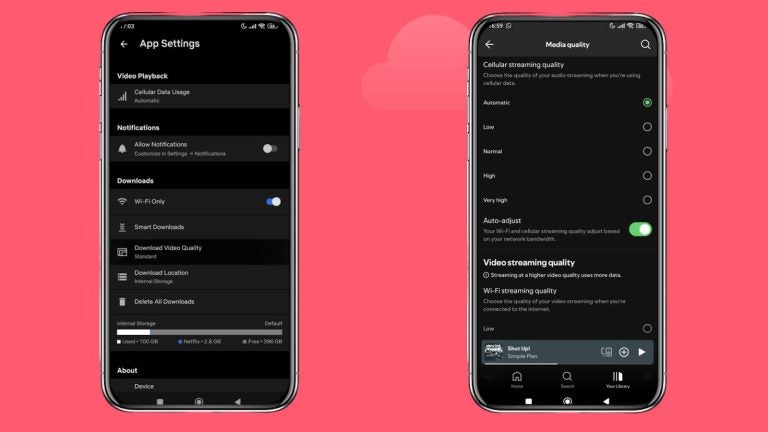
That way, you’ll consume less data, while quality will make it easier to enjoy what you’re watching or listening to.
How much data does downloading music/movies consume?
Downloading content is a good idea if you plan to watch these later on. But is the data consumption worth it? Check a Netflix Data Usage Calculator to understand how the hours of streaming translate into gigabytes used.
In this case, you’ll consume the same amount of data when downloading a movie or series from Netflix, HBO, Amazon, or any other streaming service, but in less time.
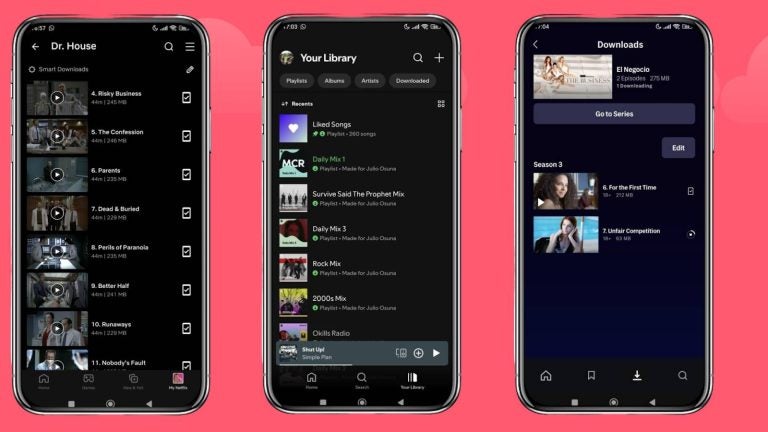
The same goes for Spotify and Apple Music. There is a way to change how much data you use when downloading content from streaming services, but it is the same as streaming videos; you can modify the download quality on your favorite apps. That way, you’ll consume less data when downloading something.
How does video duration impact data usage when streaming?
The video duration impacts data usage in two different ways when streaming content:
- The longer the video, the more data it will consume.
- The streaming quality also affects data usage.
So, it’s not simply a question of watching Netflix at SD quality and consuming 0.64 GB per hour rather than spending 7.7 GB in an hour.
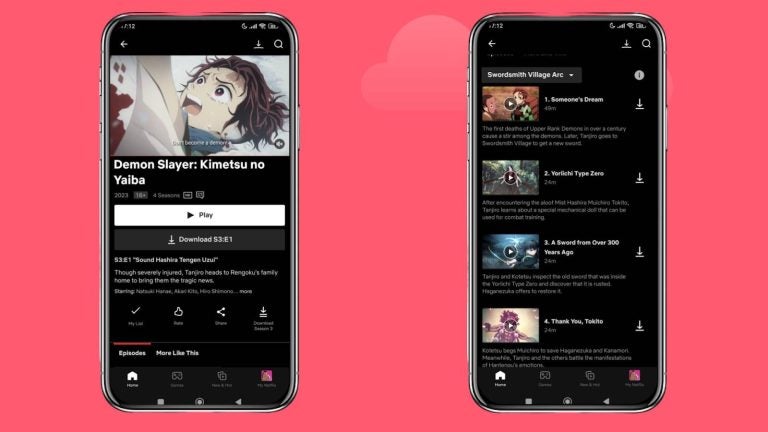
For example, anime chapters last less than average series, so you’ll consume less data, even though you watch these in HD quality!
How to check data usage when streaming
Do you watch TV or listen to music on your phone? You’re not alone. Streaming is popular mostly on mobile devices. The good thing here is that it’s easier to check how much data you’ve spent while watching movies, listening to music, or even watching Discord streams.
So, let’s check how to check your data usage on Android and iOS.
How to check data usage on Android
- Go to “Settings”.
- Press on “More connectivity options”.
- Look for the “Data usage” option.
- You can check the data usage for each streaming app you have installed there.
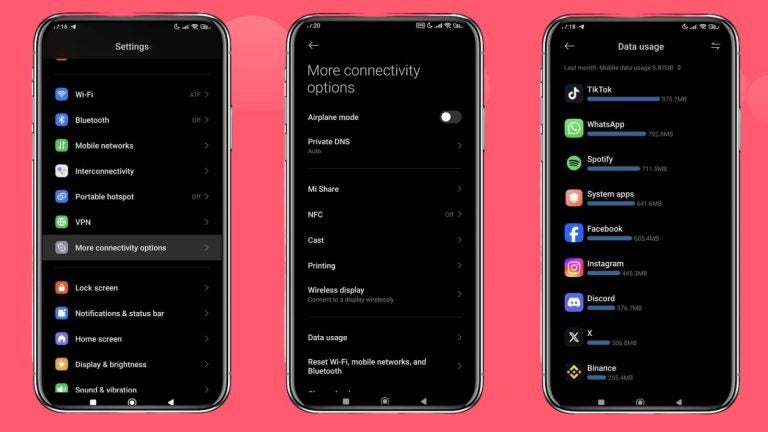
This menu also allows you to check your data usage for the last month, the current month, the previous day, and today.
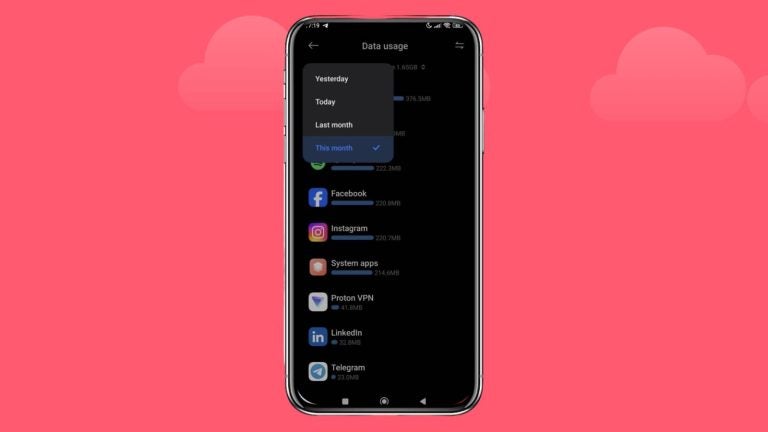
How to check data usage on iOS
- Go to “Settings”.
- Choose the “Cellular” menu.
- Check out the data usage for the different streaming apps you have installed on your iPhone.
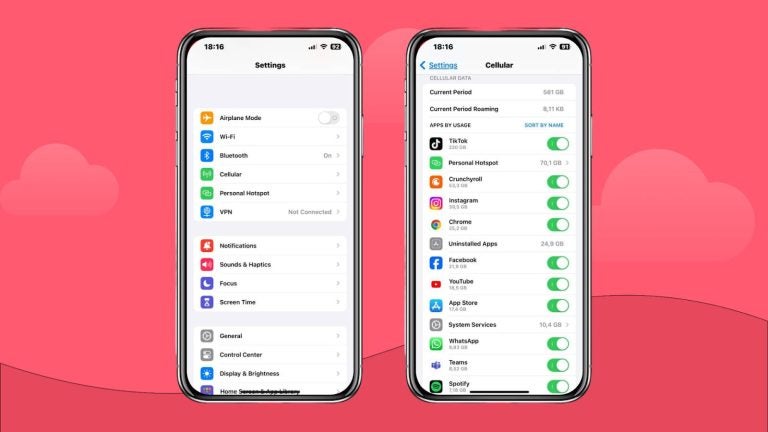
Tips to improve your data usage when streaming TV
Since streaming content consumes a lot of data, but as we won’t stop watching Dr. House or listening to the new Linkin Park song on Spotify, it’s better to have some tips for better data management.
- Change the video resolution when you want to stream using your data. The lower the resolution, the less data you’ll consume per hour.
- Download content while using a WiFi connection to avoid using your data while still getting access to the best video quality. This also works for Spotify and Apple Music premium plans.
- Activate the “Data saver” option on your streaming apps or establish a data cap on these apps.
- Keep an eye on your mobile data usage to avoid extra charges.
- Consider getting an unlimited data plan to stream your favorite content without many limitations. This is especially useful if you are traveling, and using a Holafly eSIM with unlimited data can help you stream content and use other apps like Google Maps or social media like TikTok.
FAQs
Data usage per hour varies depending on which app you are using. For Netflix, HBO Max, Apple TV, and similar apps, you’ll use from 300 MB to 7.7 GB. For Spotify, Apple Music, and Amazon Music, data usage ranges from 25 MB to 400 MB per hour.
No. The idea of downloading content is to watch it on Full HD or Ultra HD without consuming data.
Yes. If your streaming device is a TV, you’ll still use data to watch content on Netflix, Prime Video, and HBO, among others, but since these are mostly connected to a WiFi network, there’s nothing to worry about.





 Language
Language 


















 No results found
No results found
















